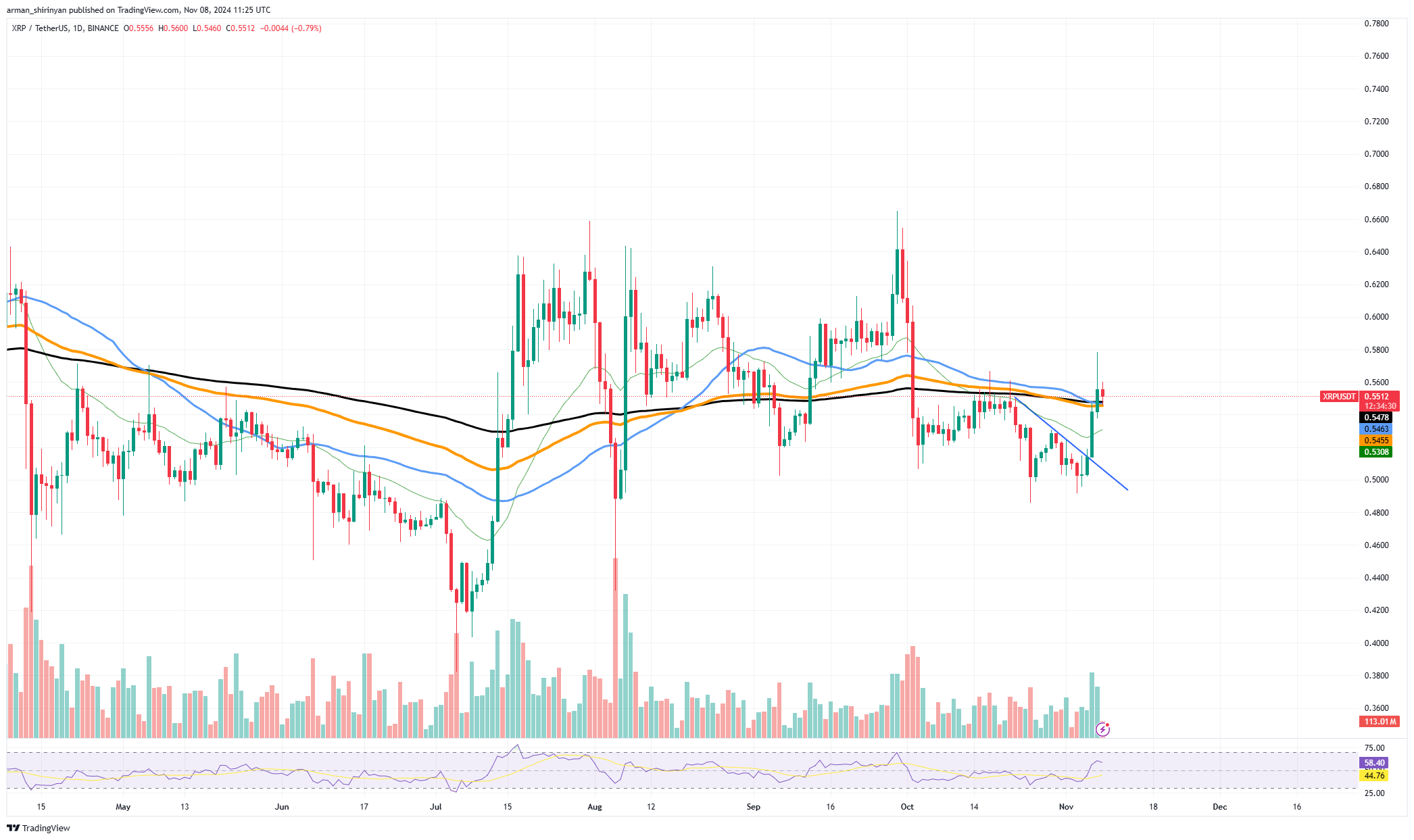Recent data on XRP’s network activity shows that whale transactions and overall movement have significantly decreased, with metrics indicating a drop in transaction volume of more than 50%. Particularly when examining the volume and quantity of payments made to and from accounts over the past month, which show a significant drop in major network transactions, this decrease is significant.
XRP is currently trading at about $0.55 on the price chart, with recent attempts to breach significant resistance levels just above this point. The chart shows that XRP recently crossed a number of significant moving averages, but it still encounters resistance in the $0.55-$0.57 range, which is frequently where selling pressure appears.

Furthermore, the decline in network activity may indicate that whales and major investors are growing wary, perhaps expecting that XRP will not be able to maintain its recent surge in the absence of backup. The decline in network activity may indicate that major holders are choosing not to participate in important network transactions.
Because there will be less trading volume, there may be less liquidity and possible price stability for XRP, which could result in less volatility for the time being. If this pattern persists, though, it might also indicate that bigger players are losing interest in the asset, which could eventually cause it to decline. Short-term support levels to keep an eye on are around $0. 50 and $0.53, where the asset has previously demonstrated resilience.
The primary resistance is still situated close to $0.57. More upside may be possible if XRP is able to break and hold above this level with higher volume. On the other hand, a failure to stay above the moving averages could be a sign that the market is about to retrace to lower levels of support.
Overall, XRP’s inability to clearly break above resistance levels combined with decreased network activity could be indicating a period of consolidation or, if trading activity keeps declining, a bearish outlook. Investors should monitor price action and network metrics to determine whether whales will reenter the market, which could provide it with fresh momentum.





